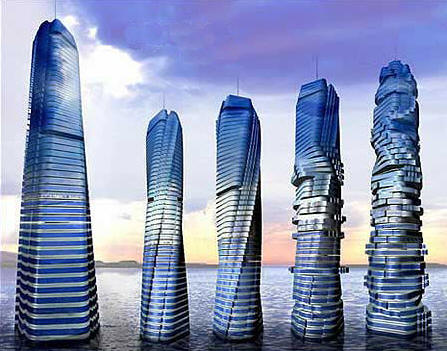



 These pre-fabricated units will then be shipped to the construction site and then assembled on the central core, the only part that will be built on-site using traditional techniques to house important static amenities like elevators, staircases, plumbing and other utilities. Each floor of the tower will consist of 48 of these factory-made modules that will arrive at the job site completely finished and self-contained with electrical, plumbing as well as air-conditioning systems ready for use. The modules will then be mechanically assembled at the rate of one floor every three days.
These pre-fabricated units will then be shipped to the construction site and then assembled on the central core, the only part that will be built on-site using traditional techniques to house important static amenities like elevators, staircases, plumbing and other utilities. Each floor of the tower will consist of 48 of these factory-made modules that will arrive at the job site completely finished and self-contained with electrical, plumbing as well as air-conditioning systems ready for use. The modules will then be mechanically assembled at the rate of one floor every three days.When completed, the rotating tower skyscraper will have 68 floors and will be 313 meters (1,027 feet) high. There will be a 6-star hotel, offices and apartments of various sizes besides five villas on the top floor. Each of the villas will have designated parking on the same floor with vehicles brought up and down in special elevators. The roof of the “Penthouse” villa will also have a swimming pool, a garden and an Arabian majlis. The tower also have a retractable heliport, a platform that will extend from the shell of the building at the 64th floor at the moment of landing, thus maintaining the dynamic aesthetic architecture of the tower.
If you can’t visualize how the tower can have endless shapes by dynamically rotating floors to adapts to its surroundings but also to the tenant’s needs and the tenant’s caprices, the following video may help you.
The Rotating Tower is actually a tower with a central concrete core surrounded by 59 independently rotating levels. It will also be the first skyscraper built with industrial systems process, where 90% of the building materials will be produced and constructed as modules in an industrial factory set up in Jebel Ali.



